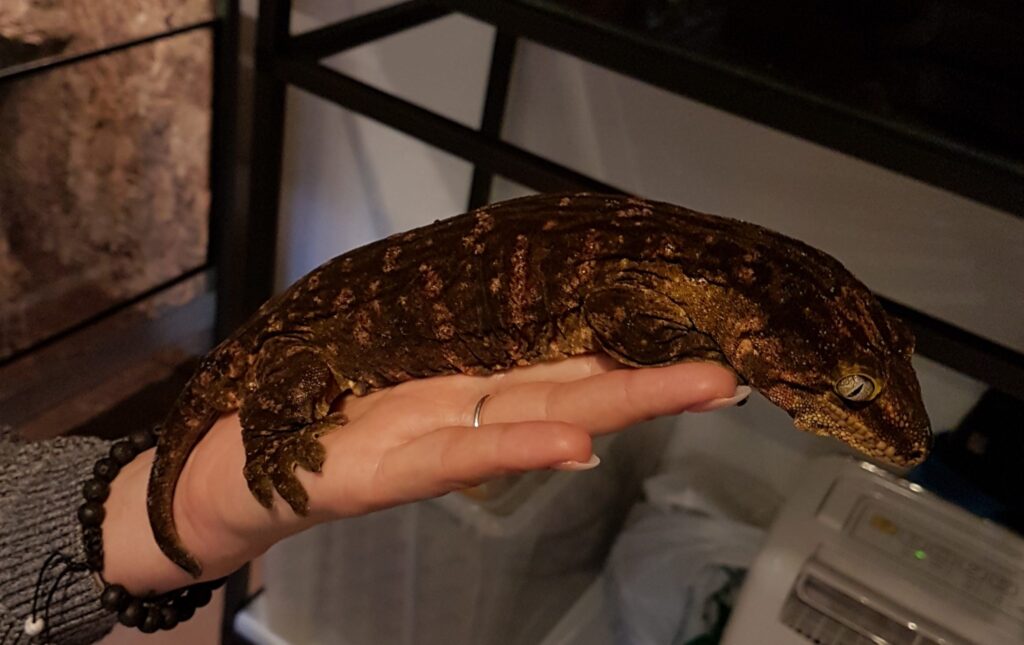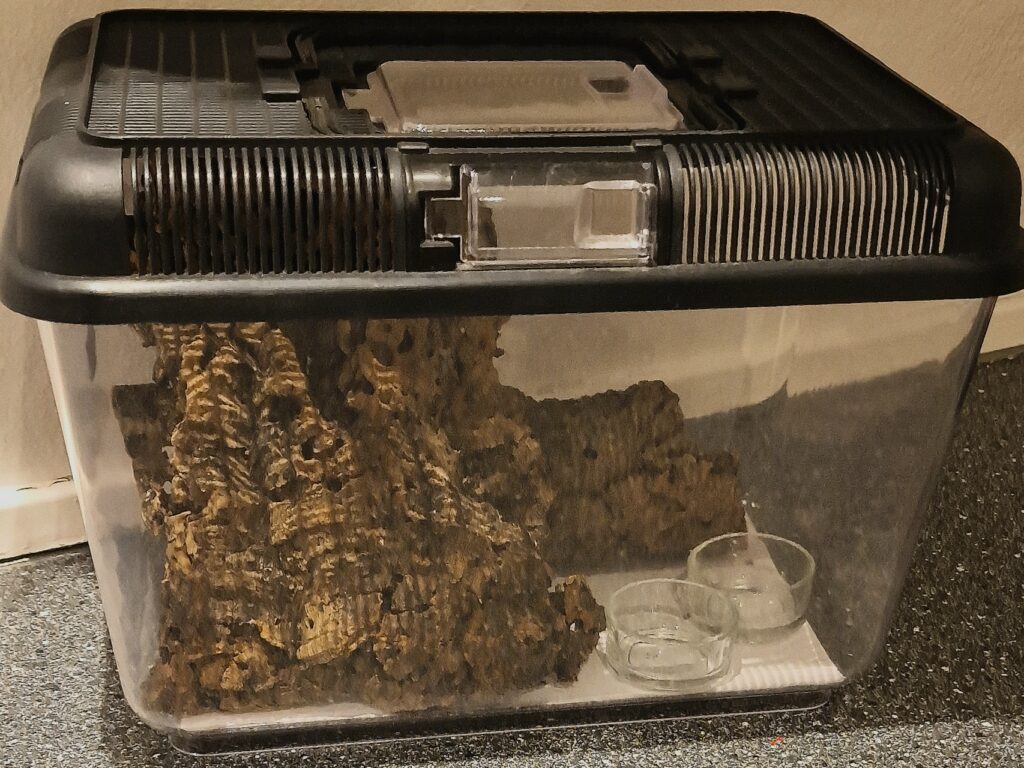Care Guide for the Rhacodactylus leachianus.
(New Caledonian Giant Gecko)
Origin and Natural Habitat
The Rhacodactylus leachianus, commonly known as the New Caledonian Giant Gecko or “Leachie,” is native to the islands of New Caledonia, a French territory in the southwest Pacific Ocean. This group of islands is located between Australia and Fiji and is known for its rich biodiversity, boasting a unique range of flora and fauna. Due to its isolated environment, New Caledonia has become home to many endemic species found nowhere else in the world, including Rhacodactylus leachianus.
In their natural habitat, these geckos are found in forested areas, usually inhabiting the trunks and canopies of large trees. Their environment consists of a warm, humid climate with distinct wet and dry seasons, creating a lush environment that allows them to thrive.
—
Enclosure and Environment
To mimic their natural habitat, a spacious vertical enclosure is ideal, as Rhacodactylus leachianus are arboreal and enjoy climbing. A glass terrarium or custom-built enclosure with dimensions of at least 60 x 60 x 90 cm (24 x 24 x 36 inches) is recommended for a single adult. Make sure to add branches, cork bark, and sturdy vines to provide climbing opportunities and hiding spots.
1. Temperature:
Daytime temperature should be between 24-27°C (75-81°F).
Nighttime temperatures can drop to around 18-21°C (65-70°F).
It’s essential to avoid overheating; Rhacodactylus leachianus do not tolerate extreme heat well.
2. Humidity:
Maintain a humidity level of 60-80% to mimic their natural environment.
Mist the enclosure once or twice daily to keep humidity stable.
Provide a shallow water dish and monitor humidity using a hygrometer.
3. Lighting:
While UVB lighting is not strictly necessary, low-level UVB can be beneficial.
Provide a 12-hour light cycle to replicate their day-night rhythm.
—
Diet
Rhacodactylus leachianus are omnivorous, consuming a diet of both insects and fruits in the wild. In captivity, a balanced diet can be achieved with commercially available crested gecko diets, which offer the nutrients they need.
1. Commercial Gecko Diet:
High-quality powdered diets are available and should form the core of their nutrition.
Prepare according to instructions and feed 2-3 times per week.
2. Insects:
Supplement their diet with live insects like crickets, roaches, or mealworms once or twice a week.
Dust insects with calcium and vitamin supplements.
3. Fruits:
Occasionally offer small pieces of fruit like bananas or papaya as a treat.
—
Handling and Temperament
Rhacodactylus leachianus are known for their relatively calm demeanor, but some individuals may be more defensive. They are generally more docile than other gecko species, making them suitable for gentle handling, especially if acclimated to human interaction from a young age.
Handle them carefully, as they can become stressed if handled too often. Keep sessions short and always provide them with plenty of support.
—
Health and Hygiene
1. Shedding:
Ensure adequate humidity to assist in smooth shedding.
Offer rough surfaces within the enclosure to help them remove old skin.
2. Regular Cleaning:
Clean the enclosure and replace substrate regularly to maintain a healthy environment.
Remove uneaten food and spot-clean daily to prevent mold or bacteria growth.
3. Monitoring Health:
Look for signs of a healthy gecko, such as clear eyes, a robust body, and an alert demeanor.
If you notice any unusual behavior, changes in eating, or physical symptoms, consult a reptile veterinarian.
—
Conclusion
Rhacodactylus leachianus can make fascinating and rewarding pets with the right care. By providing a suitable environment, a balanced diet, and regular maintenance, you can enjoy the company of this unique gecko species and help it thrive in captivity. Their origins in New Caledonia serve as a reminder of their wild beauty and need for specific care, but with the right approach, they can adapt well to life with a responsible owner.

